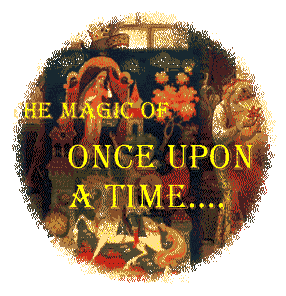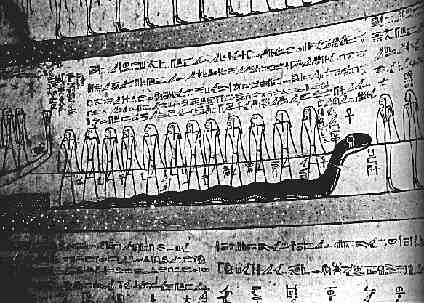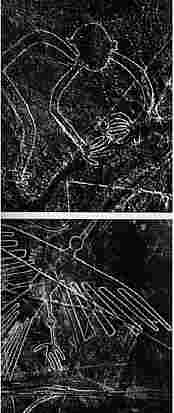|
Narrative Logo - Click for Main Menu Lecture II. Tales Told Around the Fire - The Oral Folk Tradition
The Oral Tradition
Handprints from Anasazi ruins in Canyon de Chelly.
Oral tales are as old as Language itself. From the earliest paintings in caves, to the evocative vignettes of the Egyptian Book of the Dead, to the Urban Legends of today, we have always wanted to transform the truths of our lives into universal stories. The roots of oral tradition are unclear - they go back to prehistory. We do not know if there were stories and rituals associated with the cave markings that may be 50,000 years old - or older. Scholars are divided on this issue. Some believe that ancient markings were largely functional, but most assert that the earliest signs were probably part of narrative or ritual constructions that were central to the culture.
The snake Apepi, monster of the underworld, threatens the Bark of Re in the Book of the Dead. Because petroglyphs, pictographs, and tomb carvings remain, and the spoken word is not preserved for us, we have no clear idea of the nature of the myths and legends that might have accompanied the archaeological remains. However, there are clues. First, we have the earliest legend material from the Valley of the Tigris and the Euphrates, the Sumererian Epic of Gilgamesh.
An offering to the Goddess in ancient Sumeria Dr. Lee Huddleston's page tells us: The Epic of Gilgamesh comes to us from the collection of the 7th century BCE Assyrian king named Ashurbanipal. The original from which the Assyrian version was copied was composed in Old Babylonian times but was based in legends and stories from older Sumerian sources about a real King of the city of Uruk on the Euphrates River. This epic is the most important literary product of Ancient Mesopotamia. The Epic of Gilgamesh would seem to be a written version, then, of a far earlier legend cycle that existed in the culture in oral version. If we were able to recapture that oral myth, we would have to call it folklore. However, it contains many elements that we think of as both sacred and eternal. The earliest Flood story is there, as is an explanation of why man is mortal - a tree of life, and warring "brothers." Egyptian hieroglyphs present a somewhat different situation. The early version of the The Book of the Dead, carved in a fully-developed set of spells in the Old Kingdom. Hieroglyphs as early as @ 2500 BCE, refer to the Isis-Osiris legend obliquely - Isis takes her place in the underworld, Osiris is already entombed - but does not narrate the tale directly. Very strange. The myth may have been so well known in the Egyptian culture that no explanation was necessary. In the graphics that accompany later iterations of The Coffin Texts and the manuscript versions, we can see the iconography that tells us of the motifs that accompanied the myth. The Tree of Life, the Mother and Child, the Eternal Bark of Re, traveling forever in the Amentet.
Table of symbols for the ancient Mayan glyphs Archaeologists have long puzzled over the signs and symbols that ancient cultures created. It was only with the discovery of the Rosetta Stone that hieroglyphics were discovered to be a complex language of symbol, sound, and determinative. The Mayan glyphs eluded decoding for even longer. However, within the last twenty years, much progress has been made, and again, these signs seem to be recording folk material, that is, material that was familiar in oral form to everyone in the culture.
An aerial view of the Nazca lines from a high Peruvian plain Finally, we have remnants of ancient cultures that we still cannot read. The Nazca lines of Peru may contain a wealth of stories that explain the mystery of their symbolism, but we must await further discoveries. Yet, as soon as we see written works at all, we see that folklore always already existed in many forms. Early Egyptian manuscripts include folk tales like "The Tale of Sinuhe," the story of an exile, the "Tale of King Neferkare," and fascinating letters of advice to youngsters, folk medicine remedies. The spells, themselves, depend on magic. The legendstock of Folklore from earliest days, then, can be divided into several categories.
|





